Chevrolet Suburban at 85: The Legacy Continues
- Auto Haven

- Dec 12, 2019
- 4 min read
Updated: Dec 16, 2019
DETROIT — Back in 1935, the world was a vastly changing place still reeling from the effects of the Great Depression. Amidst all this, Americans still found a way to reach new heights of innovation and achievement. Movies debuted in color for the first time, baseball home run records were shattered, and the last concrete was poured at the Hoover Dam, the world’s largest at the time. That same year, Chevrolet introduced the Suburban in the United States.
Still in production eight and a half decades since its debut, the Suburban has earned the title of the industry’s longest-running nameplate. In fact, Suburban is the first vehicle to reach 85 years of continuous production.
Over the years, the Suburban has cemented its place in the hearts of many. As a beloved part of the family, trusted bodyguard and member of the armed forces, first responder and even a movie star, the original SUV has built an impressive and unrivaled legacy worthy of a celebration.
The original 1935 Suburban could seat eight, while removable seats provided a large 115.1 cubic foot (3,259 L) cargo area when the second-row seats were folded and third-row seats removed. It was powered by an inline-six-cylinder engine that produced 60 horsepower. The 2020 Suburban seats up to nine and offers up to 121.7 cubic feet (3,446 L) of maximum cargo space when second and third-row seats are folded down. The available 6.2L V-8 produces 420 horsepower – seven times the power of the 1935 model – with an EPA-estimated 23 mpg highway.

85 years of innovation Car-based wagons for professional use were offered by most manufacturers throughout the early 1930s. Most of these early vehicles featured wood sides and canvas tops; and while they were versatile, their car-based platforms and damage-prone bodies were not suited for continuous commercial use.
It was clear that customers required something more. Chevrolet began testing an all-steel wagon body mounted on a commercial chassis in the mid-1930s. This research and development resulted in the launch of the Suburban Carryall in 1935 – the first heavy-duty, truck-based wagon of its kind.
The Suburban’s heavy-duty truck-based chassis increasingly found favor with commercial customers. In the post-World War II growth years, its popularity steadily increased with private customers who appreciated its uncompromising capabilities and dependable utility. The Suburban hit mainstream fame in the early 1990s as part of the SUV boom. While many customers were new to the Suburban, it had a legion of longtime owners over the years.
From hauling Little League teams and their equipment, to towing a horse trailer on the ranch, or transporting a work crew to a job site, the Suburban had become a fixture of American culture.
Generation 1 – 1935-40
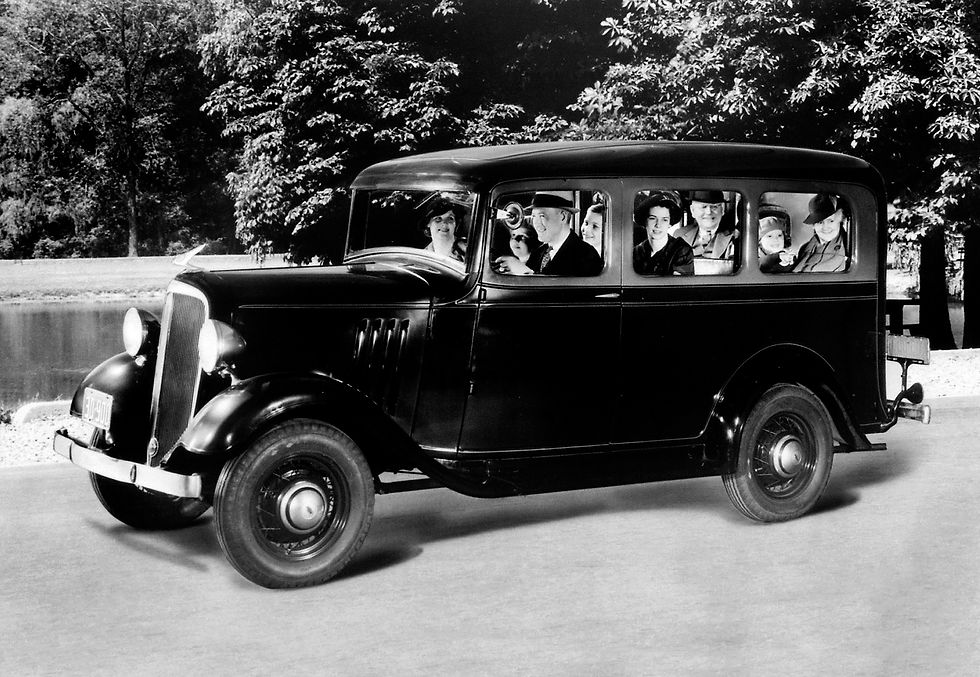
The Suburban Carryall is introduced on a half-ton chassis, with a signature two-door body style that would be produced through 1967. Power came from Chevrolet’s tough “Stovebolt” inline-six that produced 60 horsepower (45 kW). In 1937, new Art Deco exterior design cues were added and power was increased to 79 horsepower (59 kW).
Generation 2 – 1941-46
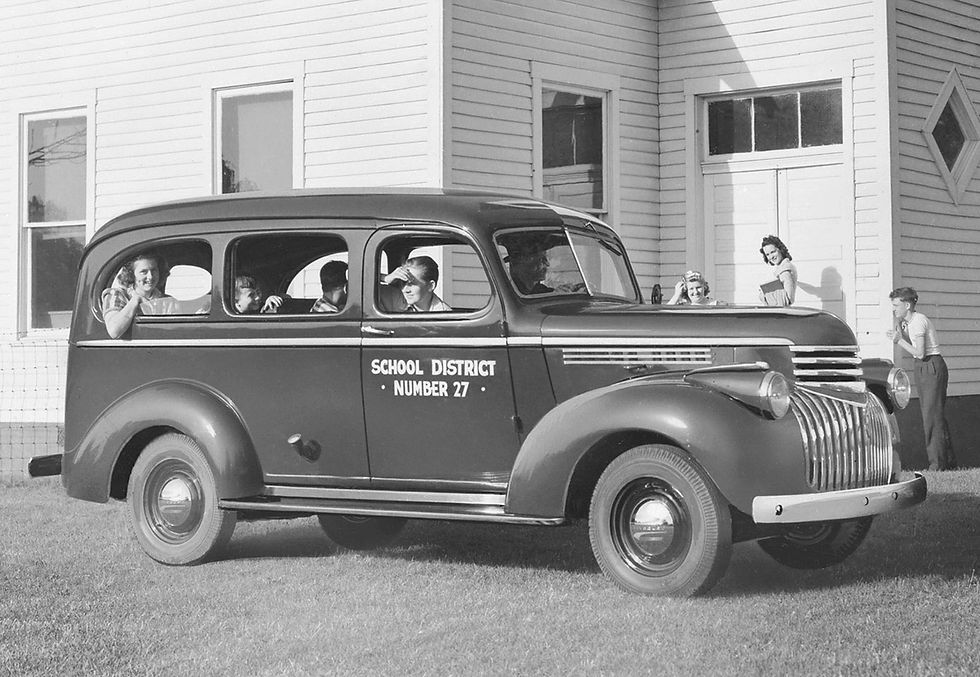
Production of almost all civilian vehicles halted during America’s involvement in World War II, although many Chevy trucks – including the Suburban’s body style – were produced for military duty.
Generation 3 – 1947-55
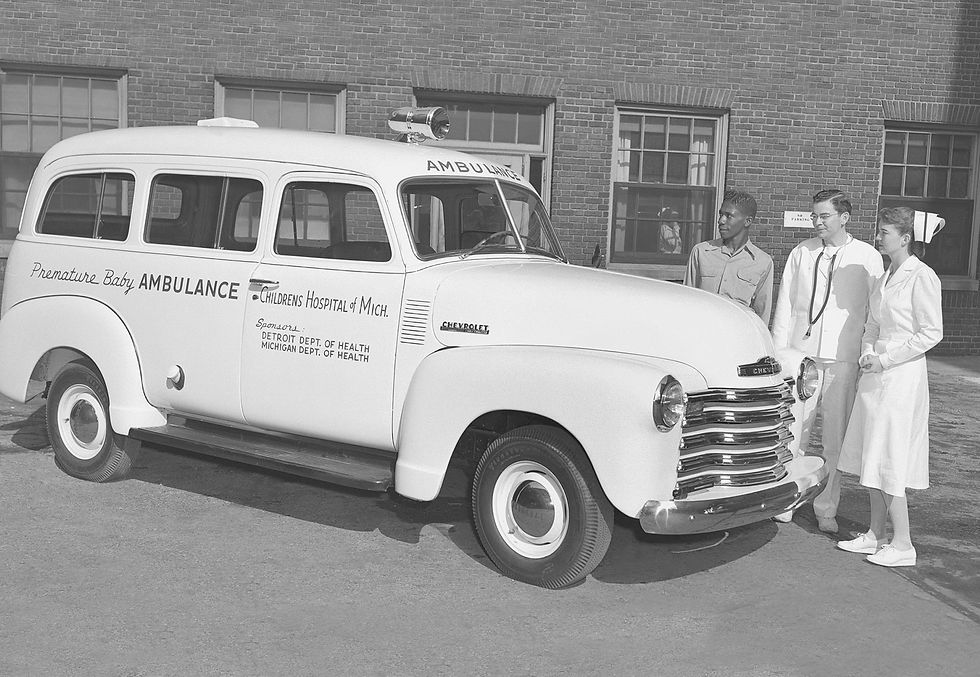
Representing the first significant redesign of Chevrolet’s truck line since before the war, the Suburban was welcomed by professionals in need of an all-new workhorse. Torque from the inline-six engine was 174 lb-ft (217 Nm) at only 1,200 rpm, creating excellent towing capability.
Generation 4 – 1955-59
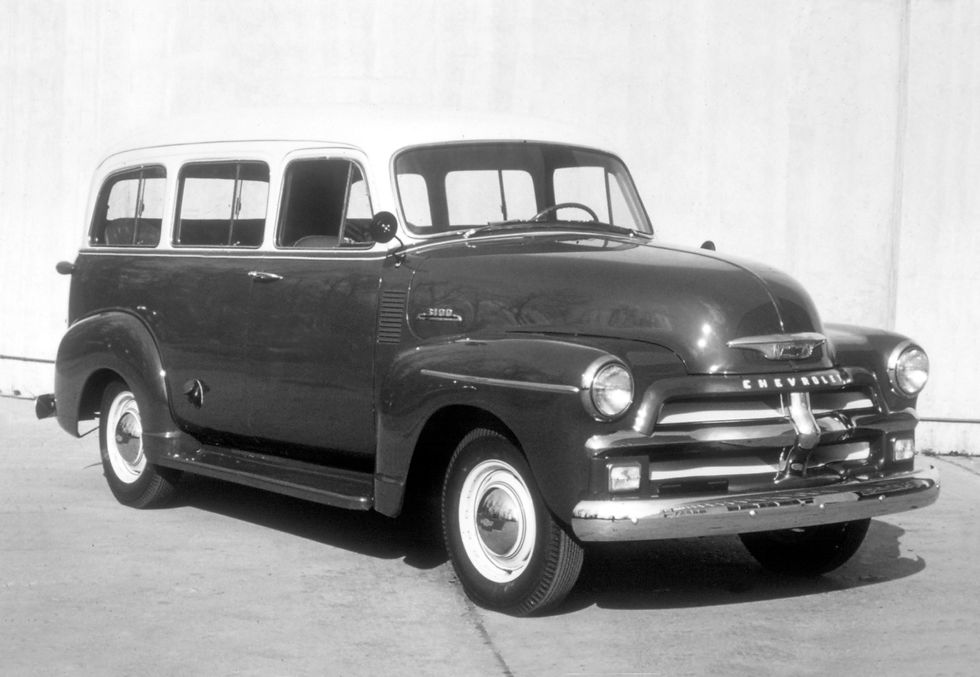
Revolutionary new styling and technology is introduced midway through the 1955 model year. Known as the “second series” design, it featured a wraparound windshield and the elimination of running boards – the body now flush with the fenders. The biggest addition was Chevrolet’s first V-8, the legendary Small Block. In 1957, factory-installed four-wheel drive is offered for the first time, with the famous NAPCO-supplied “Powr-Pak” system.
Generation 5 – 1960-66
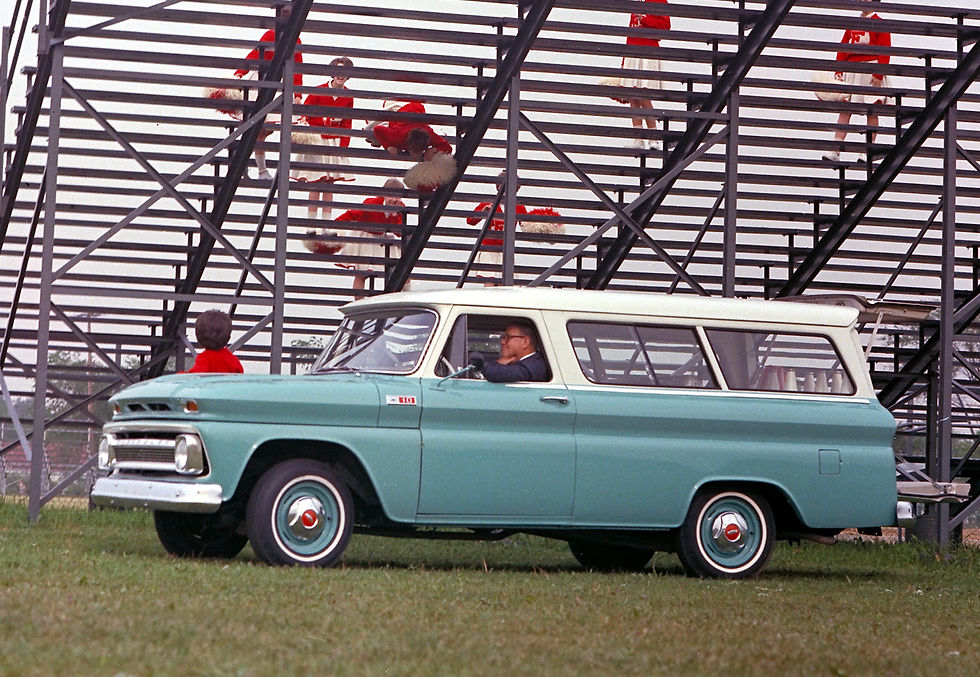
All-new styling greeted the 1960s and Chevrolet instituted the C/K designations to denote models with 2WD (C) and 4WD (K). In 1963, a ladder-type, channel-section frame replaced the X-member, box-section frames used in previous years. With a focus on passenger comfort in 1965, factory-installed air conditioning and a rear-area heater are offered for the first time.
Generation 6 – 1967-72

A redesign of Chevy’s half-ton trucks is introduced, and for the first time since its debut, the Suburban now had three doors – with a single door on the driver’s side and front and rear doors on the passenger side. This new configuration, with easier access to the cargo area, was popular with ambulance companies.
Generation 7 – 1973-91

The Suburban is completely redesigned and for the first time, offered a conventional four-door body style. The wheelbase was stretched to 129.5 inches with an increased focus on interior comfort and amenities that brought more personal-use customers to Suburban. By the late-1980s, electronically controlled fuel injection and a four-speed overdrive transmission brought greater efficiency.
Generation 8 – 1992-1999
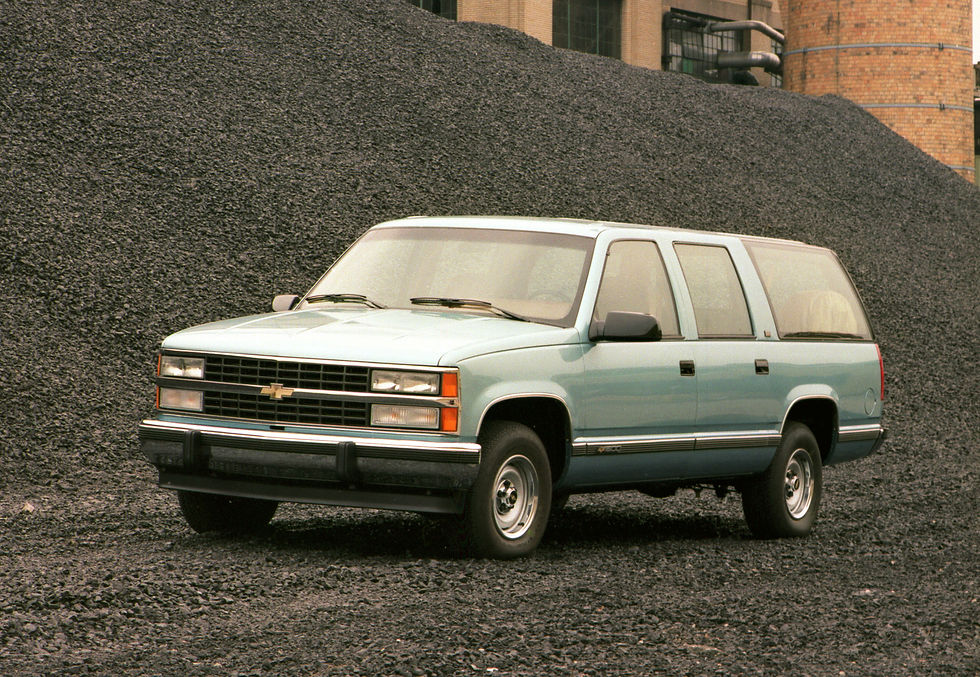
An all-new Suburban featured sleek styling with flush glass and composite headlamps. Other updates included four-wheel antilock brakes, Insta-Trac “shift-on-the-fly” on four-wheel-drive models and a suspension system designed to provide a more carlike ride. In 1998, available OnStar and the full-time AutoTrac all-wheel-drive system are added. In Australia, right-hand-drive versions of the Suburban are offered through GM’s Holden brand.
Generation 9 – 2000-2006

Launched in 1999 as a 2000 model, the 10th-generation Suburban brought new styling, new interiors and new powertrains. The engines included the Vortec 5.3L and 6.0L V-8s from the same Gen III Small Block family in the Corvette. New features included for first time are four- wheel disc brakes, a load-leveling suspension system and StabiliTrak electronic stability control.
Generation 10 – 2007-14

The Suburban features a wind tunnel-shaped exterior and elimination of traditional chrome front and rear bumpers. More efficient, comfortable and capable than ever, the Suburban continued to offer customers uncompromising capability and versatility. Safety and driver assistance feature updates included electronic trailer sway control, Hill Start Assist and available Side Blind Zone Alert 1.
Generation 11 – 2015-Present
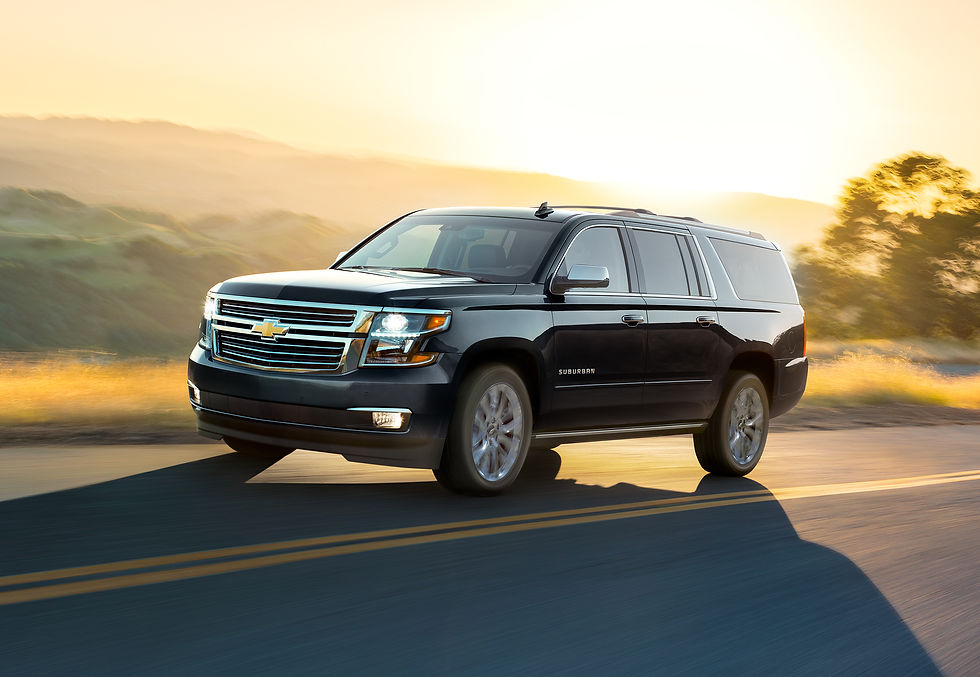
Completely redesigned to be more functional and refined, while offering more features and a greater range of advanced technologies, the current Suburban is also more efficient, thanks to a range of enhancements that include a more aerodynamic design and a new, direct-injected EcoTec3 5.3L engine. Improved aerodynamics also contributes to a quieter interior. A bevy of standard customer-focused technology features like 4G LTE Wi-Fi Hotspot (requires available data plan) 2 , Apple CarPlay 3 and Android Auto 4 are also added.


Comments